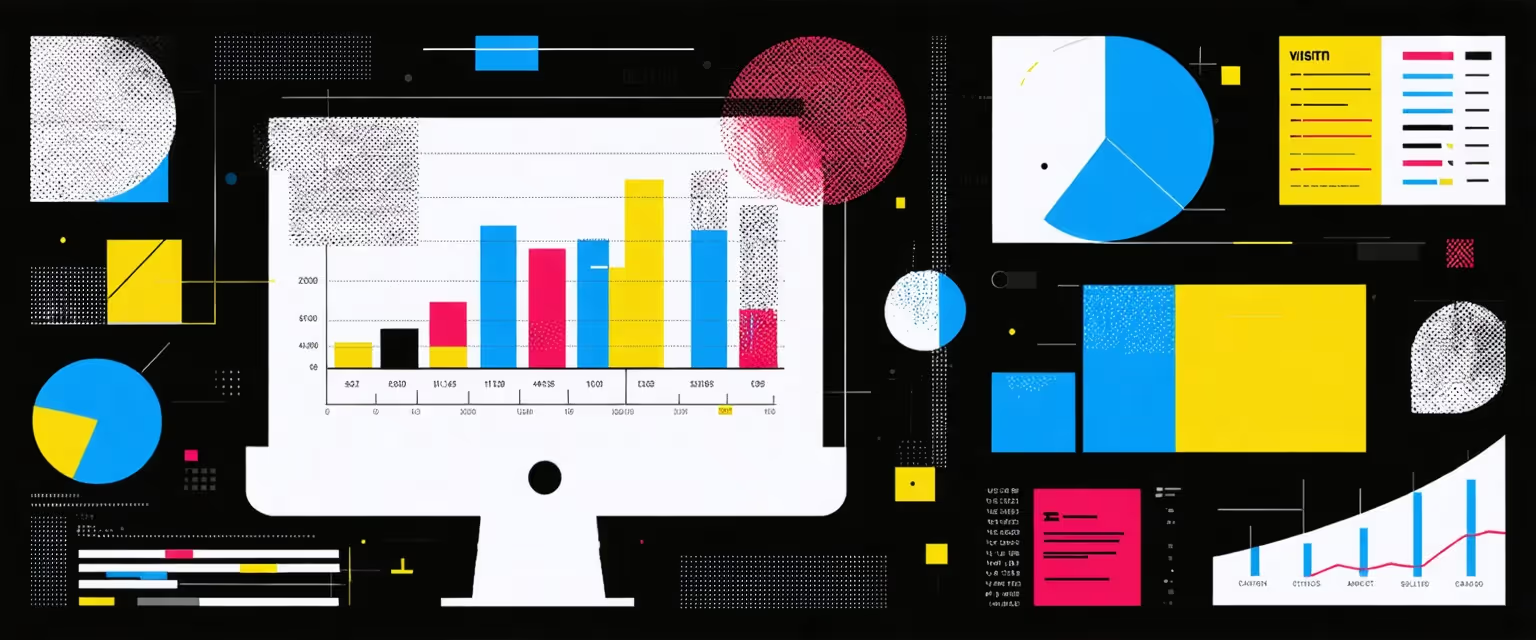Streamline financial compliance with this step-by-step guide on automating monitoring using AI. Enhance accuracy, cut costs, and ensure regulatory adherence.
Financial institutions today face a critical problem: the overwhelming volume and complexity of financial data make effective compliance monitoring nearly impossible with traditional methods. Understanding how to automate finance compliance monitoring is essential to overcome these challenges.
Datagrid's specialized connectors seamlessly integrate your disparate financial systems, creating a unified data foundation that makes automating finance compliance monitoring possible.
In this guide, let’s explore how these data integration solutions help financial institutions tackle common compliance hurdles, implement effective monitoring within your current systems, and utilize advanced technologies.
Step-by-Step Guide to Automate Finance Compliance Monitoring
Streamline regulatory adherence and reduce manual oversight with this automated approach to finance compliance monitoring.
Step 1. Define Clear Objectives for Automating Finance Compliance Monitoring
When implementing compliance automation, establishing specific, measurable goals is crucial for success. After completing your initial assessment, it's time to translate those findings into concrete requirements that will guide your journey to automate finance compliance monitoring.
Start by defining what you want to achieve with your compliance automation initiative. Your goals should be:
- Specific: Target particular compliance processes or requirements.
- Measurable: Include quantifiable metrics to track progress.
- Achievable: Be realistic given your resources and capabilities.
- Relevant: Align with your organization's overall compliance strategy.
- Time-bound: Set deadlines for achieving your objectives.
For example, rather than a vague goal like "improve compliance monitoring," specify "reduce false positives in transaction monitoring by 30% within six months while maintaining or improving detection rates."
Make sure to document how your automation goals connect to specific compliance challenges identified in your assessment. This creates a clear line of sight between problems and solutions in automating finance compliance monitoring.
Prioritizing Automation Opportunities
Not all compliance processes are equally suitable for automation. Use the following criteria to prioritize your opportunities:
- Volume and Frequency: Processes performed frequently or in high volumes typically offer greater ROI.
- Complexity: Consider the technical feasibility of automating each process.
- Risk Level: Prioritize high-risk areas where automation can provide better controls.
- Resource Drain: Focus on processes that currently consume significant manual effort.
- Regulatory Focus: Consider areas receiving heightened regulatory attention.
Create a prioritization matrix that weighs these factors to identify the most promising candidates for automating finance compliance monitoring.
Defining Success Metrics and KPIs
Establishing clear metrics is essential for measuring the effectiveness of your compliance automation initiative:
- Efficiency Metrics:
- Reduction in manual effort (hours saved).
- Faster processing times (e.g., reduced time to complete reports).
- Lower operational costs.
- Quality Metrics:
- Improved accuracy (reduction in errors).
- Decreased false positives/negatives.
- Enhanced consistency in compliance outcomes.
- Compliance Effectiveness:
- Improved audit outcomes.
- Reduction in compliance incidents.
- Faster response to regulatory changes.
- Business Impact:
- Improved customer experience.
- Faster time-to-market for new products.
- Reduced opportunity costs.
Having well-defined metrics serves multiple purposes. They help guide vendor selection by identifying which capabilities are most important, provide a framework for measuring ROI, and establish benchmarks for continuous improvement in automating finance compliance monitoring.
Remember to document your baseline measurements before implementation so you can accurately track improvements. This data will be invaluable for demonstrating the value of your automation initiative to stakeholders.
By defining clear objectives, prioritizing opportunities, and establishing concrete success metrics, you create a strong foundation for your compliance automation initiative. This preparatory work ensures that your project remains focused on solving real business problems rather than implementing technology for its own sake.
Step 2. Evaluate and Select the Right Technology Solution
Choosing the right technology partner can make or break your efforts to automate finance compliance monitoring. This step demands thorough research and evaluation to ensure you invest in a solution that meets your specific needs and works well with your existing systems.
Before diving into vendor selection, get familiar with the core technologies that drive modern compliance solutions:
- Artificial Intelligence and Machine Learning: These technologies analyze vast data sets, identify patterns, and adapt to new compliance risks.
- Natural Language Processing (NLP): NLP helps systems analyze regulatory documents and automatically extract relevant requirements.
- Robotic Process Automation (RPA): RPA streamlines routine compliance tasks and cuts manual effort.
Each technology serves a specific purpose, and the ideal solution for your organization might combine several approaches based on your unique needs in automating finance compliance monitoring.
Assessing Vendor Capabilities and Track Record
Once you understand the technology landscape, evaluate potential vendors thoroughly:
- Industry Expertise: Look for vendors with experience in your sector who understand your regulatory environment.
- Security and Compliance Credentials: Confirm the vendor maintains strong security protocols and complies with relevant standards.
- Integration Capabilities: The solution should work seamlessly with your existing IT infrastructure, including ERP systems, data warehouses, and other compliance tools.
- Scalability: Consider whether the solution can grow with your organization's needs.
- Support and Training: Evaluate the vendor's approach to implementation, ongoing support, and user training.
Create a structured evaluation framework to compare vendors objectively. This might include weighted scoring across categories like functionality, ease of use, cost, security, and support.
During demos and pilots, involve key stakeholders from compliance, IT, legal, and business units. Their diverse perspectives help identify potential issues and ensure the solution meets cross-functional needs. This structured evaluation process positions you to select a compliance automation solution that delivers real value while effectively managing regulatory risks.
Step 3. Develop a Strategic Implementation Plan
A comprehensive implementation plan is vital for successfully deploying your automated finance compliance monitoring solution. A well-structured roadmap helps your organization integrate new technology while minimizing disruption to ongoing operations. A phased approach reduces risk and allows for adjustments based on early results:
- Start with a Limited Pilot: Begin in one business unit or region to test the waters.
- Define Clear Project Scope: Establish timelines and milestone deliverables.
- Plan for Data Migration and Integrations: Ensure seamless connectivity with existing systems.
- Establish Metrics: Evaluate success at each phase of automating finance compliance monitoring.
Leveraging AI technologies can streamline various aspects of your implementation plan. For example, AI can automate pipeline updates, ensuring that integration and deployment tasks are executed efficiently. The success of your implementation depends on having the right people involved:
- Cross-Functional Project Team: Include representatives from compliance, IT, legal, and business units.
- Executive Sponsor: Identify someone who can drive consensus and remove obstacles.
- Specialized Implementation Experts: Consider bringing in experts from your vendor.
- Internal Champions: Designate "super users" who can become internal champions and trainers.
A strong governance structure is essential for maintaining alignment across teams with competing priorities and keeping the project on track.
Developing Risk Mitigation Strategies
Every implementation comes with risks, but proper planning helps minimize them:
- Contingency Plans: Prepare for potential implementation challenges.
- Change Management Strategies: Drive user adoption of the new system.
- Thorough Testing Protocols: Ensure system functionality before each phase goes live.
- Training and Support: Plan for adequate training and ongoing support.
- Rollback Procedures: Document steps in case of critical issues.
Change management is often the most challenging aspect of implementation. New technology only works if people actually use it, so develop a comprehensive plan for training, communication, and ongoing support.
By focusing on a phased approach, assembling a strong cross-functional team, and developing robust risk mitigation strategies, you'll set your compliance automation implementation up for success and ensure you realize the full benefits of automating finance compliance monitoring.
Step 4. Ensure Seamless System Integration
One of the most critical aspects of implementing an automated finance compliance monitoring solution is ensuring it integrates smoothly with your existing IT infrastructure. A well-planned integration strategy prevents disruptions while maximizing the benefits of your new compliance system.
Before beginning technical integration, identify all the systems your compliance solution needs to interact with:
- Map Connections: Link to your core banking systems, ERP, CRM, and other platforms.
- Data Flow Analysis: Identify which data flows need to be bidirectional vs. one-way.
- Determine Data Exchange Needs: Decide if real-time data exchange is needed or if batch processing works.
- Document Legacy Systems: Note any that may require special connectors or middleware.
- Create Architecture Diagrams: Show all integration points and data flows.
Integration mapping helps avoid surprises during implementation and ensures all stakeholders understand how systems will interact during the automation of finance compliance monitoring. Successful compliance automation depends heavily on data quality. Your implementation plan should include:
- Comprehensive Data Cleansing: Clean data before migration to the new system.
- Validation Processes: Ensure data accuracy and completeness.
- Phased Migration Approach: Minimize risk during transition.
- Parallel Running: Operate old and new systems simultaneously during the transition period.
- Testing Protocols: Verify data integrity post-migration.
Poor data quality can undermine even the most sophisticated compliance solution. Investing time in data preparation pays dividends in system effectiveness. Consider automating the cleanup of prospect databases to enhance data quality before migration.
Security and Access Control Implementation
When integrating compliance systems, security cannot be an afterthought. I recommend implementing:
- End-to-End Encryption: Protect all data transfers between systems.
- Role-Based Access Controls: Ensure appropriate permission levels.
- Strong Authentication Mechanisms: Include multi-factor authentication where appropriate.
- Comprehensive Audit Logging: Track all system interactions.
- Regular Security Testing: Assess integration points for vulnerabilities.
Your integration strategy should also account for regulatory requirements regarding data residency, privacy, and access controls. This is especially important when integrating cloud-based compliance solutions with on-premises systems.
By taking a methodical approach to system integration, you'll maximize the value of your compliance automation investment while minimizing disruption to your business operations. Remember that integration is rarely a one-time event—as your business and regulatory environment evolve, you'll need to continuously reassess and optimize how your compliance system integrates with the rest of your IT ecosystem.
Step 5. Implement Effective Change Management
Successfully deploying an automated finance compliance monitoring system isn't just about the technology—it's equally about the people who will use it. Even the most sophisticated automation solution will fail if your team members don't adopt it. Here's how to manage the human side of implementing compliance automation. Consider these approaches:
- Role-Specific Training Modules: Address the unique needs of different users.
- Diverse Learning Formats: Include live sessions, self-paced modules, and hands-on practice opportunities.
- Knowledge Base Resources: Provide materials that users can reference after formal training.
- Regular Refresher Sessions: Reinforce key concepts and introduce new features.
- Measure Training Effectiveness: Use assessments and adjust based on feedback.
Training shouldn't be a one-time event. Continuous learning opportunities help users build confidence and competence with the new system.
Building Internal Champions and Support Networks
Internal champions can dramatically increase adoption rates by providing peer-to-peer support and enthusiasm. Here's how to develop this critical network:
- Identify Influential Team Members: Find those who show aptitude and interest in the new system.
- Provide Advanced Training: Equip these champions with deeper expertise.
- Empower Them: Allow them to assist colleagues and gather feedback about challenges.
- Recognize Contributions: Reward their efforts in the implementation process.
- Create Support Structures: Enable champions to share knowledge with each other.
Facilitating communication tools can help teams collaborate effectively. For example, you can connect outreach with Teams to streamline interactions during the change management process.
Your communication should emphasize how automating finance compliance monitoring will make jobs easier and more impactful, not just how it serves organizational goals. Resistance often stems from fear—about job security, ability to learn new skills, or disruption to established routines.
By investing as much in the human elements of implementation as in the technical aspects, you'll significantly increase your chances of a successful transition to automated compliance monitoring. The most effective implementations blend technology excellence with thoughtful change management to ensure the organization realizes the full benefits of automation.
6. Establish Continuous Monitoring and Optimization
The journey to effective finance compliance automation doesn't end after implementation. Treating your automation solution as a living system that requires ongoing attention will ensure you continue to realize and expand its benefits. Here's how to approach continuous monitoring and optimization of your automated finance compliance monitoring:
- Track Key Metrics: Monitor processing times, exception rates, and compliance coverage.
- Automated Alerts: Set up notifications for potential issues or anomalies.
- Executive Dashboards: Provide high-level compliance status information.
- Operational Dashboards: Allow compliance teams to monitor day-to-day activities.
Additionally, leveraging AI-driven monitoring tools can enhance your dashboards by providing predictive analytics and deeper insights.
Performance monitoring isn't just about catching problems—it enables you to identify bottlenecks and opportunities for further automation or process improvement.
Adapting to Regulatory Changes
Regulatory requirements are constantly evolving, making adaptability crucial for your compliance automation system:
- Monitor Regulatory Updates: Stay informed across all relevant jurisdictions.
- Dedicated Compliance Team: Assign responsibility for translating regulatory changes into technical requirements.
- Regular Updates: Schedule periodic updates to rule engines and workflows.
- Documentation: Keep records of regulatory changes and system modifications.
- Periodic Compliance Assessments: Ensure alignment with current regulations.
The most successful organizations view compliance automation as a journey, not a destination. They're constantly looking for ways to further streamline processes and expand automation across the enterprise.
By systematically analyzing the data generated by your automated finance compliance monitoring system, you can drive continuous improvement in both the system itself and your broader compliance program.
Similarly, you can automate campaign reports to streamline report generation processes in other departments, demonstrating the versatility of automation tools across different business functions.
Regular system reviews involving stakeholders from compliance, IT, and business units should be scheduled to evaluate performance, discuss challenges, and prioritize enhancement opportunities. These reviews ensure your compliance automation solution continues to evolve alongside your business needs and the regulatory landscape.
How Agentic AI Simplifies Finance Compliance Monitoring
Datagrid enhances productivity and saves time across various industries by leveraging AI agents and automation to streamline workflows and reduce manual tasks. Here's how Datagrid's technology contributes to increased efficiency:
- Automated Data Enrichment: Datagrid's AI agents can automatically enrich datasets, eliminating the need for manual data entry and research. This allows teams to focus on high-value activities instead of spending time on tedious data gathering tasks.
- Intelligent Task Execution: The platform enables AI agents to execute tasks autonomously, such as drafting responses to RFIs, analyzing long PDFs, or creating personalized outreach emails. This automation significantly reduces the time spent on repetitive tasks across departments.
- Seamless Integration: Datagrid connects with over 100 apps and tools, creating an integrated ecosystem where information flows seamlessly between platforms. This integration eliminates the need for manual data transfer and reduces the risk of errors.
- Automated Reporting and Analytics: AI agents can generate regular reports and analyze data from various sources, providing insights without requiring manual compilation. This feature is particularly useful for managers who need up-to-date information for decision-making.
- Streamlined Communication: The platform automates communication processes by sending personalized notifications, reminders, and updates across various channels like email, Slack, and Microsoft Teams. This ensures that all team members stay informed without constant manual follow-ups.
By implementing Datagrid's AI-powered solutions, organizations can significantly reduce time spent on administrative tasks, allowing employees to concentrate on strategic activities that drive business growth and innovation.
The platform's ability to handle complex data operations and automate workflows makes it a valuable tool for enhancing productivity across diverse industries.
Simplify Finance Compliance Monitoring with Agentic AI
Ready to revolutionize your sales process with AI-powered data automation? Datagrid is your solution for:
- Seamless data integration across 100+ platforms
- AI-driven lead generation and qualification
- Automated task management
- Real-time insights and personalization
See how Datagrid can help you increase process efficiency.
Create a free Datagrid account













